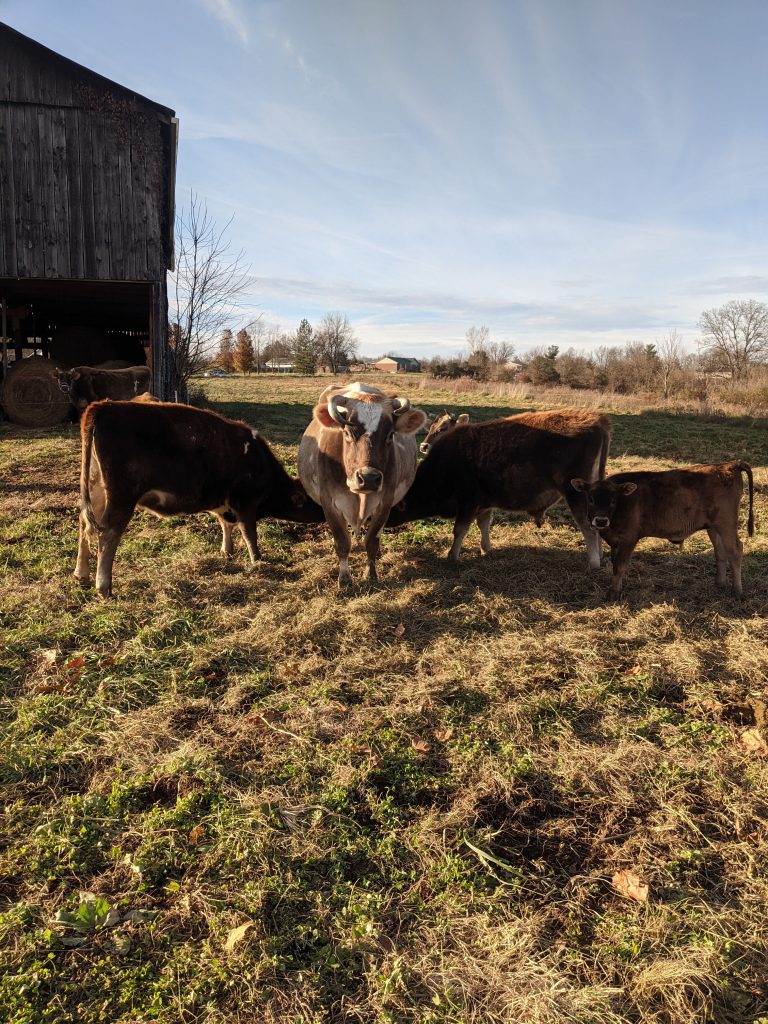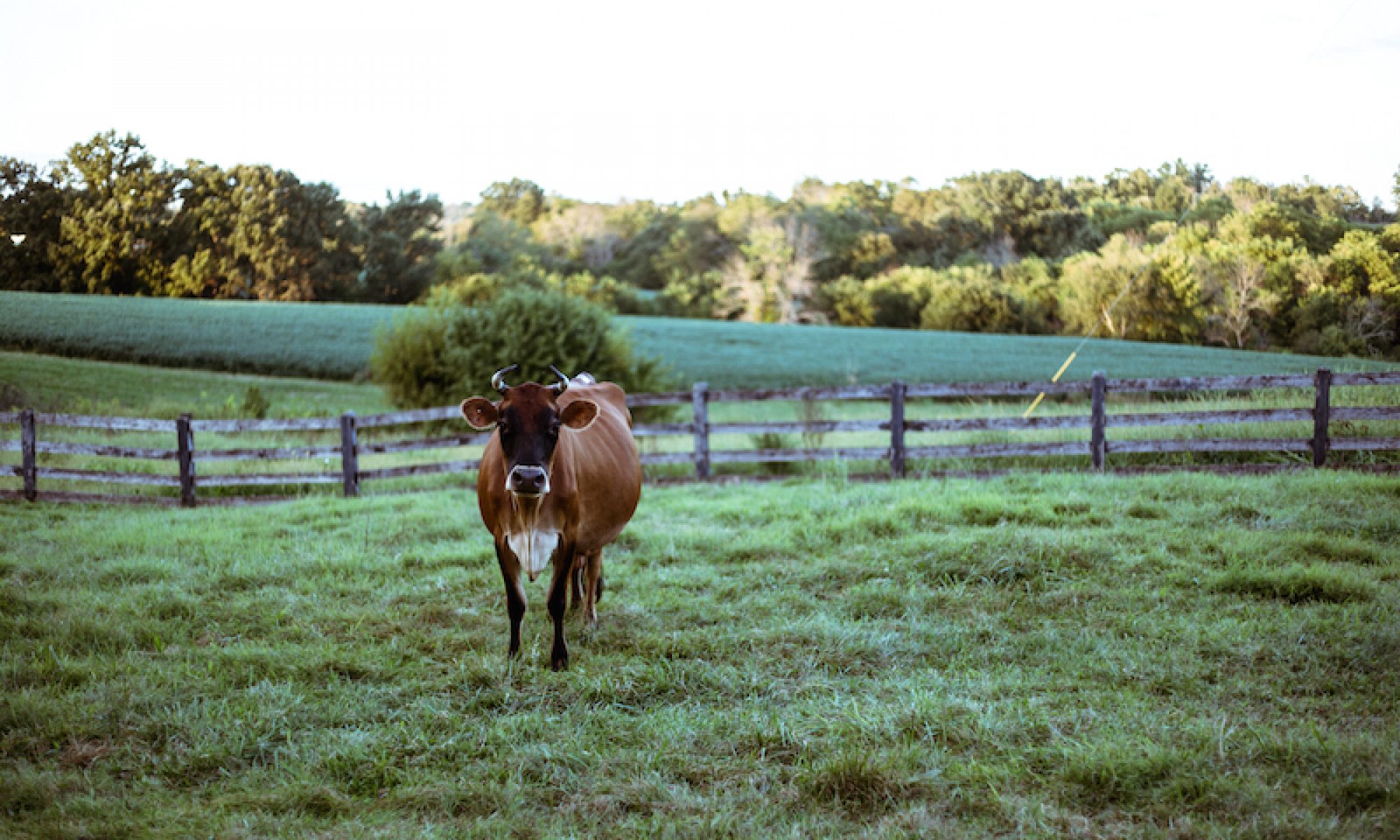I do this work because I believe so strongly in the value of this food. I love getting to be in service of these incredible animals: while enjoying a free resource – grass – they fertilize and improve the pastures and make enough nutrient-rich milk to raise a calf and share the extra with me.
 Two key pieces for me that set raw, grass-fed milk apart:
Two key pieces for me that set raw, grass-fed milk apart:
A Living Food: Full fat, unprocessed milk is a complete food and a source of a wide variety of vitamins, minerals, essential fatty acids and other important compounds. It contains important enzymes that help you assimilate the nutrients in milk. These enzymes are the natural components that cause the milk to sour naturally, as opposed to going rancid.
Digestibility: Many have reported digestive problems associated with processed milk. Processed milk is a completely different food from its raw origins. Pasteurized milk destroys the living enzymes that are necessary to assimilate the calcium, milk sugars and milk solids contained in milk. Homogenized milk no longer has fat particles sized as they naturally occur, making these essential nutrients unrecognizable to the body. Raw milk has all these essential enzymes and fat particles intact, assuring digestibility and assimilation.
The RealMilk.com website offers some great resources for further reading. Below are links to the pages with snippets from the articles.
Why Humans Drink Raw Milk (from Realmilk.com)
“It is likely that milk was consumed in both fresh and fermented forms from the early days when humans first began milking animals. Ancient baby bottles provide evidence that milk from animals was used to feed human infants at least 8,000 years ago.8 Around the same time, clay vessels for straining curds and whey were also in use.9
Dairying practices spread along with civilization throughout large areas of Asia and Europe. Milk was a revered food in many civilizations. People used milk in religious ceremonies in ancient Mesopotamia, Egypt, India, Ireland, Scotland, Greece and Rome.10 Primary religious source texts reveal that milk was an esteemed part of life.”
Vitamins and Minerals (from Realmilk.com)
“Real milk that is clean, fresh, full fat, and unprocessed is a complete food and a source of a wide variety of vitamins, minerals, essential fatty acids and other important compounds. After all, raw milk is Nature’s exclusive food for infants, so it must supply every single nutrient that the infant needs.
Milk is an important source for nutrients like fat-soluble vitamin A, D, E and K2; vitamin C; all the B vitamins, especially vitamins B2, B6 and B12; and minerals like calcium, phosphorus and zinc as well as essential trace minerals. Levels of these vitamins will be higher if the cow is on pasture eating green grass.
Moreover, raw milk supplies enzymes and carrier proteins to ensure that 100 percent of every nutrient is absorbed. Pasteurization destroys all these important co-factors. Milk that is processed, pasteurized, evaporated, centrifuged or otherwise tampered in some way, does not offer this miraculous all-in-one source for nutrients.”
“Real Milk — milk that is pasture-raised, full fat and unprocessed—is an inherently safe food. That’s because raw milk contains numerous bioactive components that
- Kill pathogens in the milk (lactoperoxidase, lactoferrin, leukocytes, macrophages, neutrophils, antibodies, medium chain fatty acids, lysozyme, B12 binding protein, bifidus factor, beneficial bacteria);
- Prevent pathogen absorption across the intestinal wall (polysaccharides, oligosaccharides, mucins, fibronectin, glycomacropeptides, bifidus factor, beneficial bacteria);
- And strengthen the immune system (lymphocytes, immunoglobulins, antibodies, hormones and growth factors).
No other food that we consume contains a built-in safety system like the one in raw milk.
Part of that safety system is in the fat in the form of medium chain fatty acids and fat-soluble vitamins A and D. In children and the elderly, drinking skim milk results in increased intestinal distress.
Of course, this protective system can be overwhelmed, as in confinement dairies where cows live in incredible filth, often forced to stand in manure. We recommend raw milk only from cows allowed to graze on pasture.
Of interest is the fact that there are no reports of death from fluid raw milk in the medical literature, going back over fifty years; but there have been dozens of deaths from pasteurized milk reported in the literature during the same timeframe.”
“In an 1884 paper read before a meeting of the American Medical Association, Dr. James Tyson provided a short history of the milk cure in Europe. Dr. Inozemtseff of Moscow wrote a book called Milk Cure in 1857, in which he describes the treatment of a thousand cases. In 1864, Dr. Philip Karell read a paper on the milk cure before the medical society of St. Petersburgh. Said Karell: “With regard to my own practice I have, after fruitlessly trying all sorts of remedies in many chronic and obstinate diseases, at last succeeded in bringing the elementary [alimentary] canal, that seat of so many diseases, under my control. I did this by administering milk according to a new method.” In treating digestive disease, liver problems, asthma and other lung disorders, nervous diseases he concluded,”… in all these cases I consider milk as the best and surest of remedies.” Physicians had similar success in Germany and France.”
